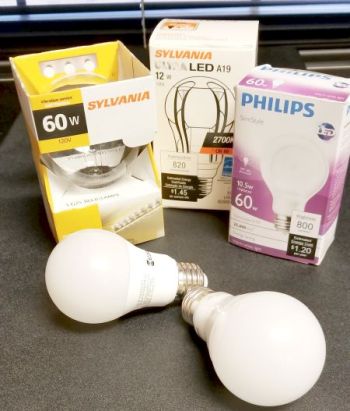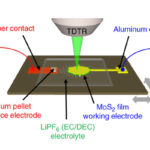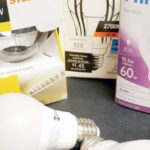Another myth busted: You needn’t worry about ultraviolet light coming from ordinary LED bulbs.

We recently checked a batch of LED bulbs for the amount of blue light they gave off. This effort came in response to claims from some in the alternative medicine crowd that LED bulbs gave off inordinate amounts of unhealthy blue light.
Perhaps to the disappointment of alternative medicine proponents, none of the LED bulbs we checked put out any more blue light than ordinary 60-W incandescent bulbs. But one reader came back at us with this comment:
White LEDs work by producing visible light as second emission. The semiconductor only produces UVC light at single wavelength, then a mixture of phosphore (SIC) adsorbs UVC and converts in to visible light of many wavelengths. The problem is in the UVC not being totally converted, thus partially emitted: UVC rays are dangerous to the eyes, so must be filtered. Products of good quality include a filter indeed. But on the market, specially (SIC) on the web, there are many products which would not pass safety regulation limits. If you want to perform a check you need a light meter working on UVC wavelengths, I doubt the one you used is the correct one…
Complaining about tests of blue light output because they didn’t test for ultraviolet light output is a little like moving the goal posts after the play is over. But never mind that. It is easy enough to check LED bulbs for UV as well. And that’s what we did.
First some definitions. The UVC light range, usually written as UV-C, is the portion of the ultraviolet range that produces germicidal effects. It includes the germicidal wavelength of 253.7 nm and is used for air and water disinfection. Human overexposure to UV-C is known to cause temporary skin redness and harsh eye irritation, but no permanent damage, skin cancer, or cataracts.

To measure UV-C wavelengths you need a light meter sensitive to those frequencies. We used a radiometer sensitive to UV-C that is made by UVX, now Analytik Jena US LLC. The typical use for these instruments is for monitoring the output of UV lamps to gauge their remaining useful life.
But we didn’t stop with just measuring UV in the C range. Anticipating the possibility of additional carping from readers about LED emissions in other parts of the UV spectrum, we procured another light meter sensitive to longer UV wavelengths. This was a model UV513AB made by General Tools & Instruments LLC.
For test subjects, we used the same five LED bulbs measured in our tests of blue light output. These bulbs were those that Consumer Reports rated most highly after subjecting bulbs to its testing regime. Additionally, we tested two ordinary 60-W incandescent bulbs, one frosted, one clear. We also had some ordinary fluorescent tubes and a 60-W equivalent CFL available, so we tested them as well.
The results we obtained in the UV-C range are easy to summarize: zilch. None of the LED bulbs or incandescent bulbs we tested produced any measurable output in the UV-C wavelengths in the most sensitive range (200 µW/cm2 full scale) on the UVX meter. Ditto for fluorescent bulbs.
The results were slightly different for tests with the General meter which has a peak response at UV wavelengths around 350 nm. Again, none of the LED bulbs put out any measurable UV. But that wasn’t the case for the incandescent bulbs or the fluorescent bulbs.

We found both 60-W incandescent bulbs emitting around 10 µW/cm2 of UV when measured one foot away from the bulb. The CFL and the tubular fluorescent bulb were a bit worse, emitting 19 and 27 µW/cm2 respectively of UV.
None of these results are surprising for those familiar with illumination-grade LEDs. LED makers that we’ve seen publish graphs of spectral response for the LEDs they provide. A review of these graphs shows that most of the output for LEDs designed for general illumination is at 450 nm wavelengths and longer. The output at shorter than 400 nm is essentially nil according to published data. We looked at the published spectral response curves of general illumination LEDs made by several mainstream suppliers and we could find none that had any output at UV frequencies.

This leads us to wonder how the idea of ordinary LEDs putting out UV light got started. To buy the proposition that LED bulbs put out UV light, you’d have to either not be aware of the spectral response of LED chips used in the bulbs, or not believe the published data. And it is not clear why LED makers – and based on the published data we found it would have to be all LED makers — wouldn’t tell the truth about the output of their LED chips.
So there you have it. Your LED bulbs aren’t going to disinfect anything. And the main source of longer-wave UV in your house is likely to be fluorescent tubes and CFLs. If you are concerned about the UV light levels in your house, you might consider installing LED bulbs rather than staying away from them.







The correct response to someone who writes, “f you want to perform a check you need a light meter working on UVC wavelengths, I doubt the one you used is the correct one…”
Is what model did you use and where is your data.